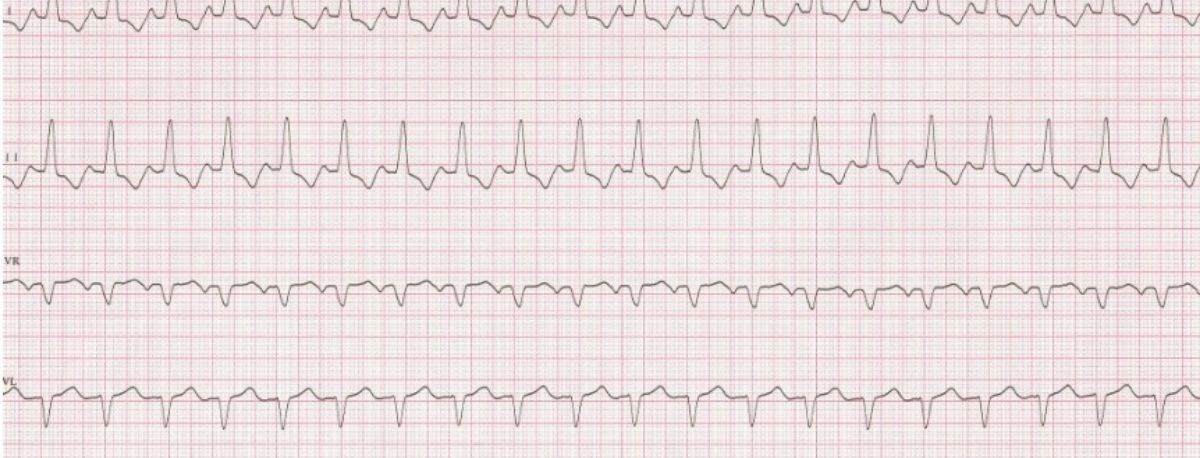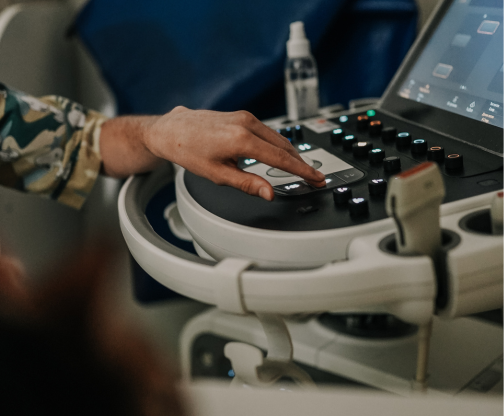ECG (Electrocardiogram)
Опубліковано
08.01.2020
Electrocardiogram
Who should do an ECG when and why?
We have long known that the electrocardiogram is an indispensable tool for evaluating the conduction system of the heart. But do we always know exactly when to do an ECG, and when to choose an ultrasound of the heart (ECHOCG)? Unfortunately, it is impossible to unequivocally answer this question, since these methods are not interchangeable. And often, for a complete picture of the work of the heart, both an ECG, an ECHOCG, and a chest x-ray are necessary.
So when is an EKG needed?
If the doctor during the examination detects an irregular rhythm during auscultation, this is a clear indication for assessing the conduction system.
But an ECG is also needed if the patient has valvular disease (endocardiosis, valvular stenosis) or myocardial disease (dilated cardiomyopathy). In these patients, electrophysiological changes cannot be assessed by auscultation. Then the ECG becomes an indispensable way to identify patients at increased risk of sudden death or at risk of developing malignant arrhythmias.
Another group of patients requiring regular monitoring are dog breeds predisposed to heart disease.
Most large and giant breeds have a pronounced genetic predisposition to cardiomyopathies. In each breed, the disease can have a different course. For example, in Irish wolfhounds, atrial fibrillation may be the only symptom of DCM. Often this breed does not develop symptoms of heart failure, but the risk of sudden death becomes higher.
Labrador Retrievers and Golden Retrievers have supraventricular tachyarrhythmias associated with the presence of additional pathways. Bernese Mountain Dogs and Dogue de Bordeaux are predisposed to atrial flutter.
Among cats, there are also rhythm disturbances that require ECG monitoring. A high heart rate, which is typical for this type of animal, does not allow reliable detection of rhythm disturbances during auscultation. Therefore, veterinarians strongly recommend that all cats diagnosed with heart disease have an ECG done.
An electrocardiogram is an essential component of a cardiac examination. But sometimes, for a patient without symptoms of heart failure, a timely study can save a life.
Схожі статті

Preparation for ultrasound examination (ultrasound)
It is important to remember that proper preparation of the animal can significantly facilitate the abdominal ultrasound process. By performing this procedure, the doctor can detect possible problems in time and provide proper treatment. High-tech ultrasound is one of the ways to quickly and informatively diagnose and ensure a long and healthy life for our pets.

Brachycephalic syndrome in dogs and cats.
What exactly is brachycephalic syndrome and how to live with it, how to prevent complications for the body that this syndrome can lead to?

WHY ARE DOCTORS NOT ALL-POWERFUL?
A good doctor is worth its weight in gold. Everyone understands this and can spend years looking for the best one, and when they find one, they will expect miracles.

Allergy
Allergy

SYNDROME OF TIRED TANKLES IN CATS
Tired antennae of a cat or What do you know about fatigue?

Bacterial myocarditis
This disease is extremely rare in dogs. In cats, it is even less common - 0.006-0.018% of cases.

How to protect home lovers from radiation damage.
In recent days, we have received many calls asking for advice on the need to protect animals during a possible radiation exposure.

STERILIZATION AND CASTRATION OF CATS AND DOGS
Such operations do not affect the change of the animal's character. They can be done from an early age, in particular from 8 weeks. Convenience, first of all for the animal, is that the young organism has the ability

Side effects of antiparasitic drugs
The need for tick and flea treatments for pets is a well-known fact.

How you can help calm cats and reduce stress today
the head of the felinology department, tells us.

